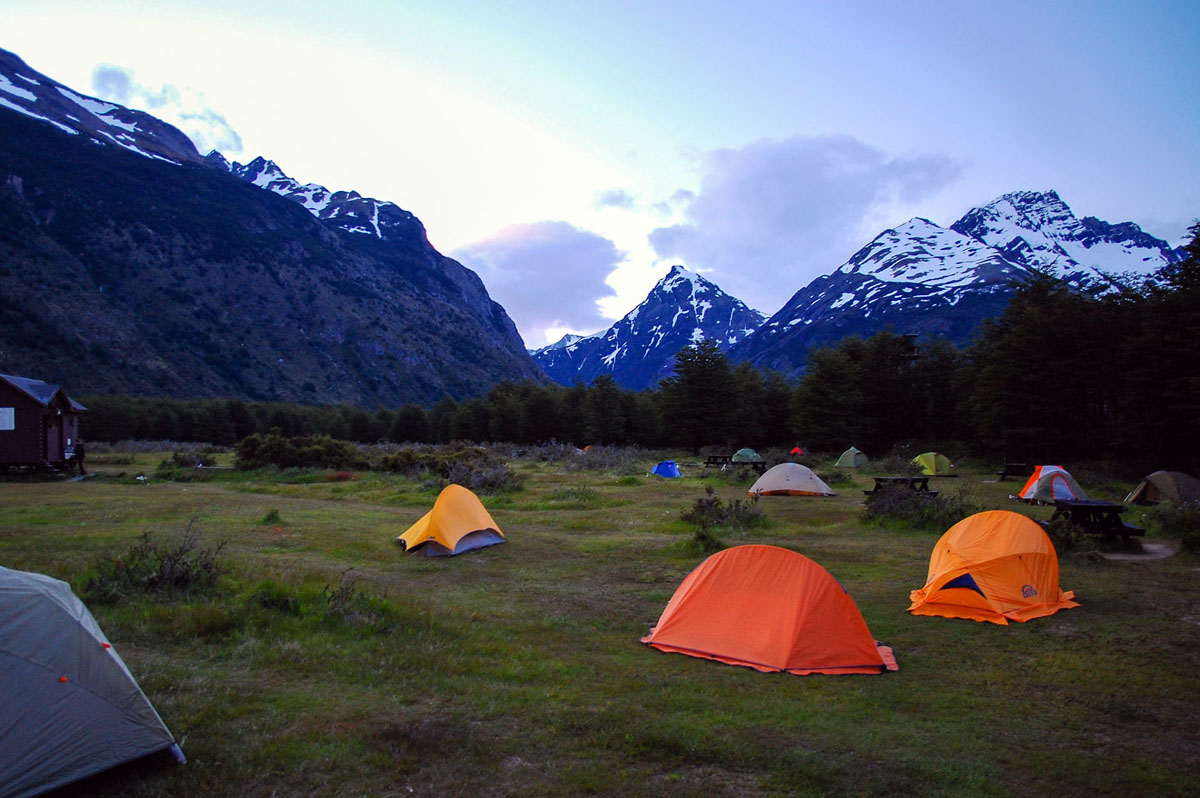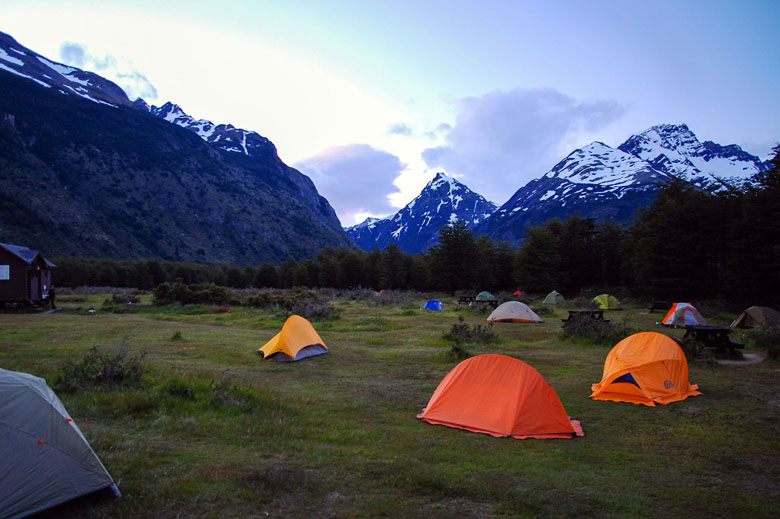

There are two types of campgrounds in Torres del Paine: free park campgrounds administered by CONAF and fee-based camping areas run by the refugios. Park campgrounds have a cooking shelter (fires are not allowed) and rustic bathroom facilities. Campgrounds run by refugios are expensive ($8–$18 per person), have more facilities, and tend to be more crowded. In recent years, refugios have begun renting tents, sleeping bags, and sleeping pads, as well as offering all meals including packed lunches. Reservations are not necessary except for those reserving tents or rooms at refugios.
Trekkers on the "W" Circuit can choose between camping, staying in refugios, or a combination. Camping is required on the backside of the "O" Circuit (camping rentals are available). Backcountry camping is strictly prohibited in the park.
There are four park campgrounds along the “W” Circuit (Guardas, Italiano, Britanico, and Torres) and one along the "O" Circuit (Paso). All visitors to Torres del Paine National Park must pay a steep entrance fee ($18,000 pesos for foreigners) but once inside CONAF-run campgrounds are free. Water inside the park is said to be drinkable without treatment, but it’s good idea to treat it anyway.
All refugios in Torres del Paine offer fee-based camping that includes access to their facilities, cooking areas, bathrooms, and showers (camping areas at Los Perros and Serón on the "O" Circuit are fee-based camprounds operated by the same companies). Below is the list of refugio-operated campgrounds including their fees for the 2016 season:
Refugio Chileno ($7,500 pesos)
Refugio Los Cuernos ($7,500 pesos)
Refugio Paine Grande ($5,500 pesos)
Refugio Gray ($4,500 pesos)
Camping Los Perros ($4,500 pesos)
Refugio Dickson ($4,500 pesos)
Camping Serón ($7,500 pesos)
During our January 2013 trek of the "W" Circuit, two CONAF-run campgrounds were closed: Italiano (sewage) and Guardas (falling trees). Despite being peak hiking season, CONAF did not apeear to be in any hurry to re-open these campgrounds and trekkers were instead forced to pay to camp outside Refugios Gray and Los Cuernos. The closures were not marked on the main map at the park entrance or communicated to us by park staff. With this in mind, be prepared for changes to your itinerary and bring sufficient cash.
You see a helpful trekking map of Torres del Paine here. The “W” Circuit (4–6 days) stretches roughly from Refugio Grey to Campamento Torres with the Valle de Frances in the middle. The “O” Circuit (6–10 days) circles the entirety of the Cordillera del Paine without doubling back.